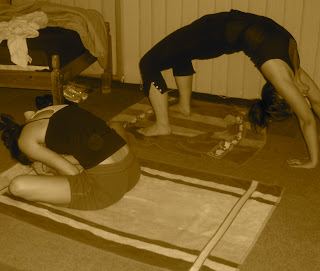I’m usually a goal-oriented person but I’m trying not to set too many goals or expectations for the month. I really just want to be completely present and soak it all in.
Besides yoga, it looks like I’ll also be learning quite a bit about rolfing and cooking while I’m here. Two of my roommates are rolfers and the woman who owns the house is a caterer (she’s been making me the most incredible raw kale salads…. YUM).








